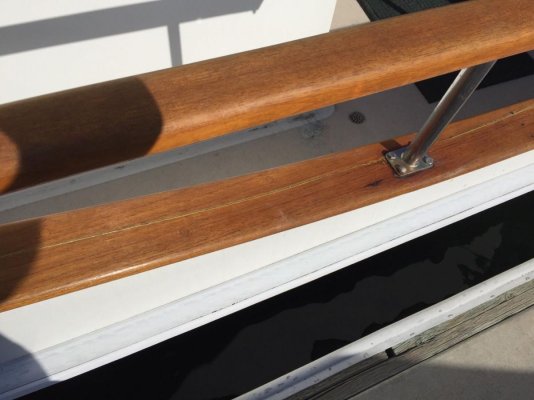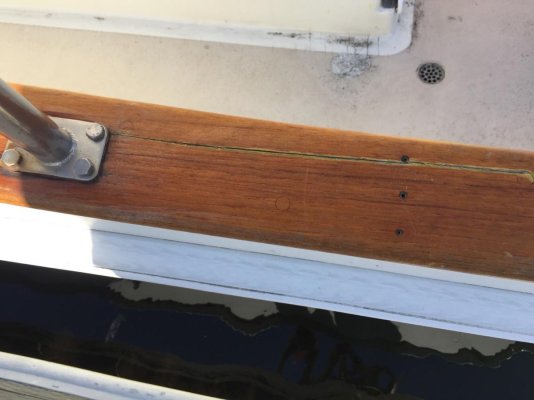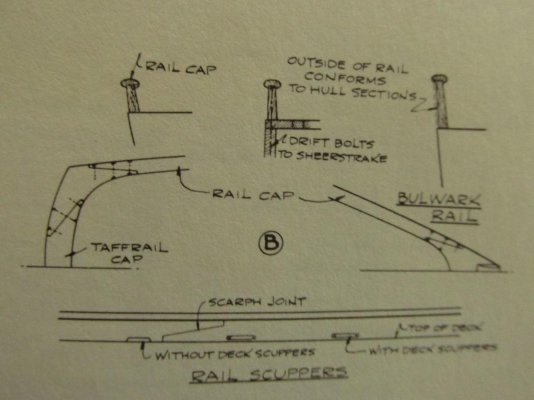You're not going out in the parade with that crack, are you? Hope the Grand Marshall doesn't see that!



Seriously, my port caprail took a beating in 2015. Two raftups with TFers (who shall remain nameless) turned sour and caused 2 popped cleats! Neither was thrubolted. If my 1977 34 LRC didn't have thrubolted cleats, I seriously doubt it has thrubolted rail stantions. YMMV
Those 2 popped cleats caused significant damage to my caprail, one requiring a sloppy field repair to return the cleat to service once back in the home slip. Eventually I'll need to either cut it out and replace it or take it all down to bare wood, repair with epoxy like the pros did last year when my bow pulpit stopped a drifting 60 Hatt like a pickle on a fork.
Hmmmm....now that I think of it, that sounds like a REALLY BAD year of boating, but in all honesty, they were 3 of my most memorable and fun trips.
In the process of the allision repair, my rubrail was removed and replaced exposing the overlap of the hull with the deck/house. I also had the chance to dig extensively in the process of thrubolting the 2 port cleats. These Californians are VERY solid with thick fiberglass hulls and caps and no fillers but lots of sharp edges. My 1977 is the first hull # for the 34 and I was told by Gil Marshall (with Jule listening in on the speaker phone) that they were grossly overbuilt due to the company's and industry's inexperience with F/G. I wouldn't worry about any leaks in the interim. The caprails are just screwed into the top edge of the F/G.
TBH, I don't mind if my boat isn't cosmetically perfect but that's not common for everyone. Maybe that's why I have artist's renditions of my boat as an avatar. I spend 50% of my time fishing from the boat and even cover the aft rails to prevent damage, but try not to stress over dings. If it's not perfect, the next scar isn't so painful. I like to use my boat and do my best to keep her in top shape mechanically. But when it comes to using my boat or polishing/varnishing my boat, I'd much rather take her for a spin.
Hope you're able to have fun at the Christmas Light Parade without worrying about that nasty caprail!







